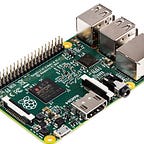Introduction to Clean Architecture: Best Practices for Software Design
In the ever-evolving world of software development, maintaining scalability and manageability of code is a significant challenge. One of the most effective ways to address this challenge is by adopting a robust architectural pattern. Clean Architecture, first introduced by Robert C. Martin (a.k.a. Uncle Bob), is a highly recommended approach for creating scalable and maintainable software systems.
What is Clean Architecture?
Clean Architecture is a design philosophy that emphasizes the separation of concerns and aims to create systems that are independent of frameworks, UI, databases, and any other external agency. The main goal is to build an architecture that allows you to easily adapt to changing requirements without needing to overhaul the entire system.
Key Principles of Clean Architecture
- Independence: The architecture should be independent of frameworks, UI, databases, and other external factors.
- Separation of Concerns: Different modules and components should have distinct and well-defined responsibilities.
- Testability: The system should be easy to test, ideally allowing for automated testing.
- Maintainability: The architecture should facilitate easy updates and maintenance over time.
